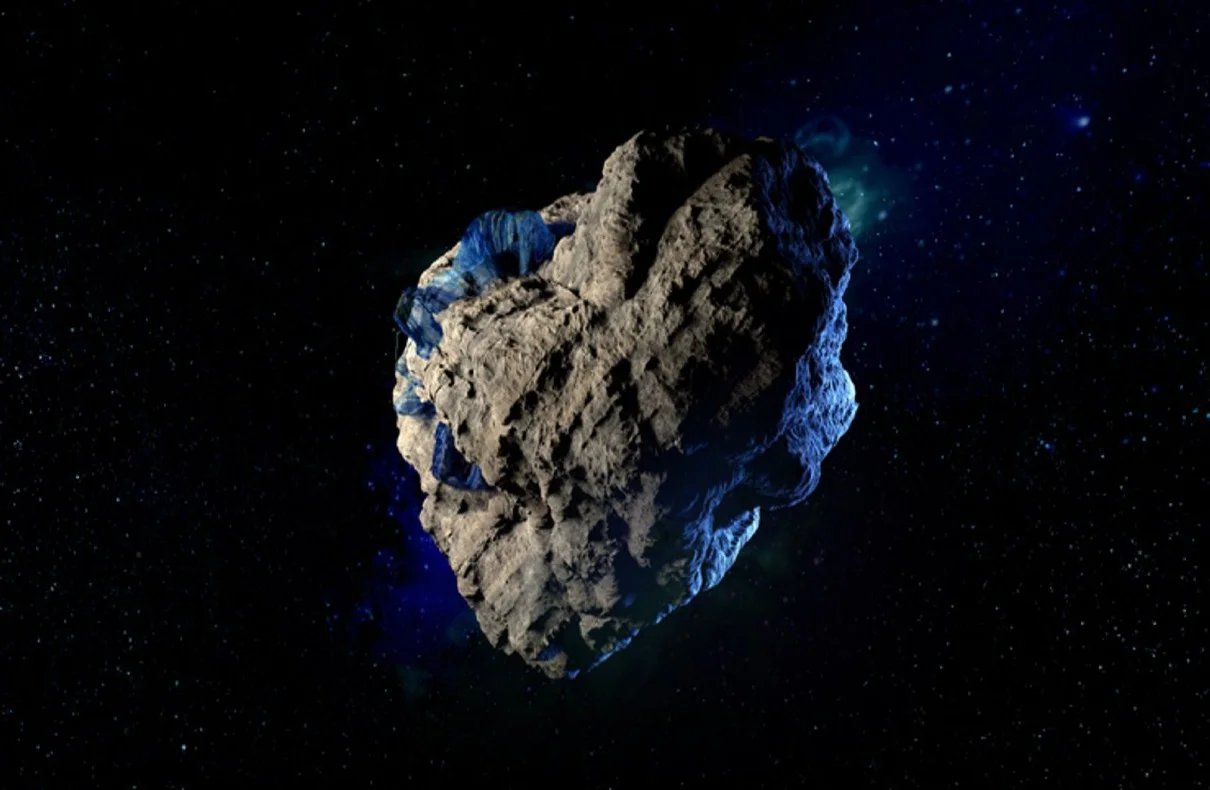In an extraordinary celestial event, a skyscraper-sized asteroid is set to make a historic close encounter with Earth. This massive space rock, comparable in size to iconic structures like the Empire State Building and Willis Tower, will pass within a staggering 1.7 million miles of our planet. Although this may seem like an uncomfortably close distance, experts assure us that there is no cause for concern as the asteroid will miss Earth by a significant margin.
The asteroid, officially designated as 2008 OS7, was first discovered in 2008. It measures between 690 and 1,575 feet in diameter, making it an imposing celestial body. To put its size into perspective, it is comparable to the height of the Empire State Building in New York or the Willis Tower in Chicago. However, despite its impressive dimensions, scientists emphasize that there is no need to worry about a potential impact.
On Friday, February 2, the asteroid will pass within 1.7 million miles of our planet. This may sound disconcertingly close, but it is actually seven times the distance between Earth and the Moon. According to NASA’s Center for Near Earth Object Studies, this flyby poses no threat to our planet. The close proximity of the asteroid presents a unique opportunity for scientists to study this celestial object and gather valuable data about its composition and behavior.
The close encounter with the skyscraper-sized asteroid is just one of several encounters that will occur this week. In addition to 2008 OS7, three smaller asteroids will also pass by Earth on the same day, each measuring only tens of yards across. The following day, two more asteroids are expected to make harmless flybys. On Sunday, another asteroid, approximately half the size of 2008 OS7, will swing by, staying a safe distance of 4.5 million miles away.
Asteroid Detected Just Hours Before It Exploded Above Berlin
Asteroids are rocky objects that orbit the Sun, resembling small planets. They are remnants from the early formation of our solar system, dating back approximately 4.6 billion years. These celestial bodies offer valuable insights into the history and composition of our universe. Scientists have been studying asteroids to better understand their origins, characteristics, and potential impact risks on Earth.
NASA, the United States’ space agency, has been at the forefront of asteroid research and exploration. In recent years, they have launched several missions to study these fascinating objects up close. One notable mission is the OSIRIS-REx spacecraft, which was sent to the asteroid Bennu to collect samples and bring them back to Earth for analysis. Another mission, the Double Asteroid Redirection Test (DART), aims to test the possibility of deflecting an asteroid’s trajectory to protect Earth from potential impacts.
The scientific community has been increasingly focused on asteroid research due to the potential threat they pose to our planet. NASA and other space agencies around the world are working diligently to identify and track Near-Earth Objects (NEOs) that could potentially collide with Earth. By studying their trajectories and characteristics, scientists can develop strategies to mitigate the risks associated with these celestial bodies.
Celestial events like the close encounter with the skyscraper-sized asteroid capture the public’s imagination and generate excitement among astronomy enthusiasts. These events provide an opportunity for people to witness the wonders of our universe and appreciate the vastness of space. Livestreams and virtual asteroid trackers allow individuals to follow the journey of these celestial objects in real-time, fostering a sense of awe and fascination.
